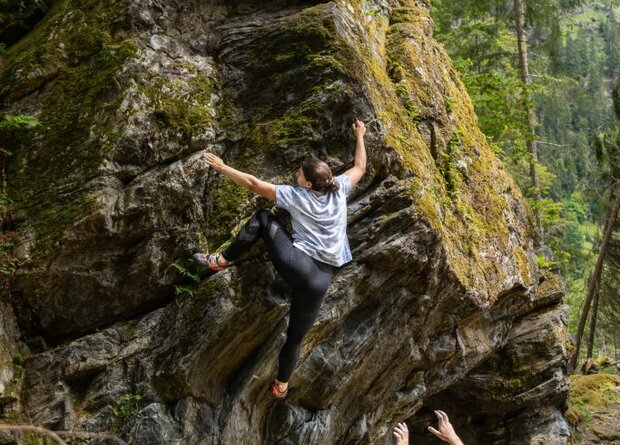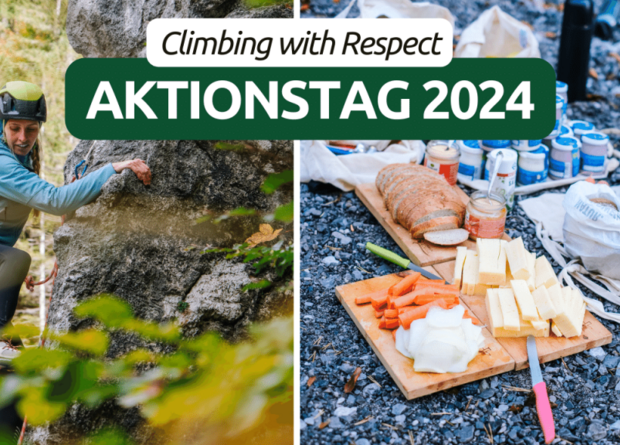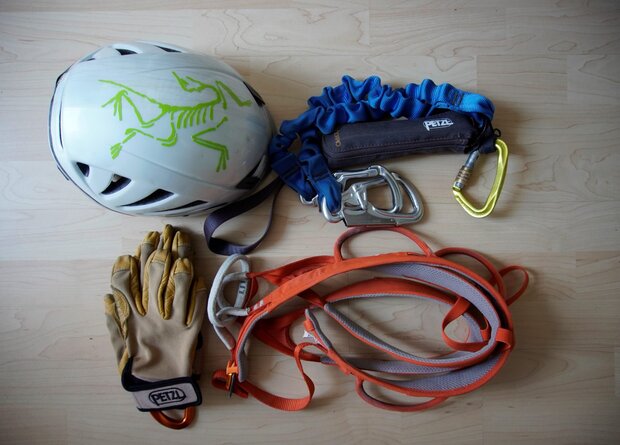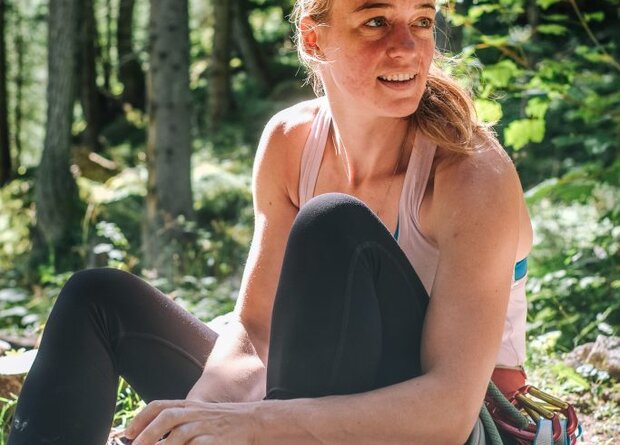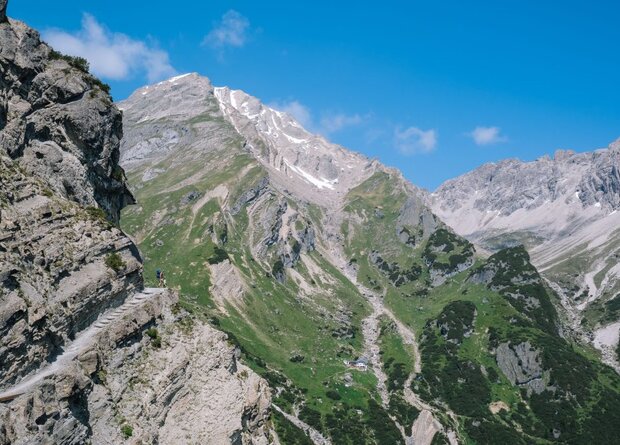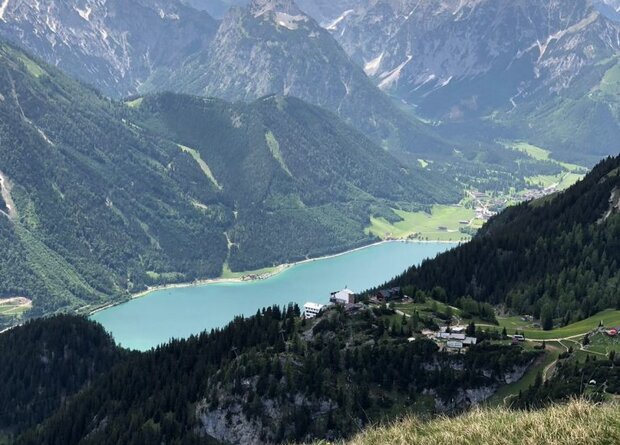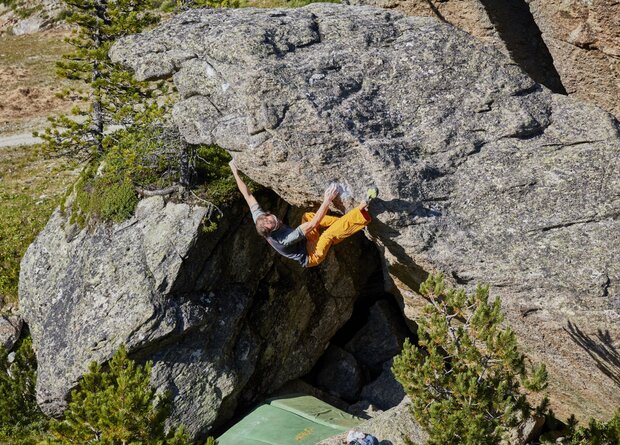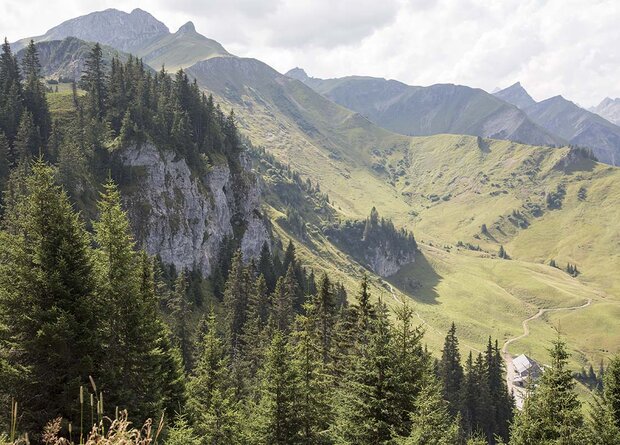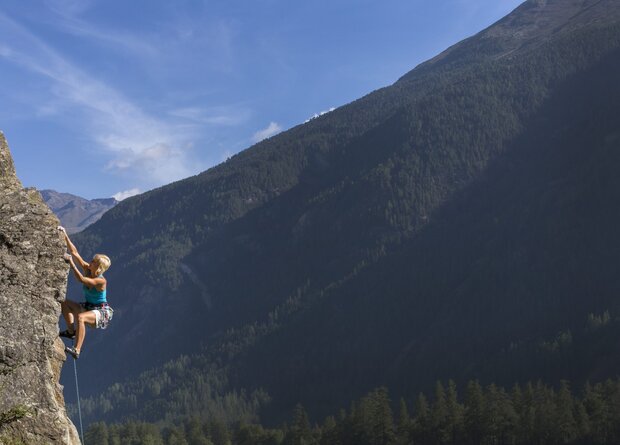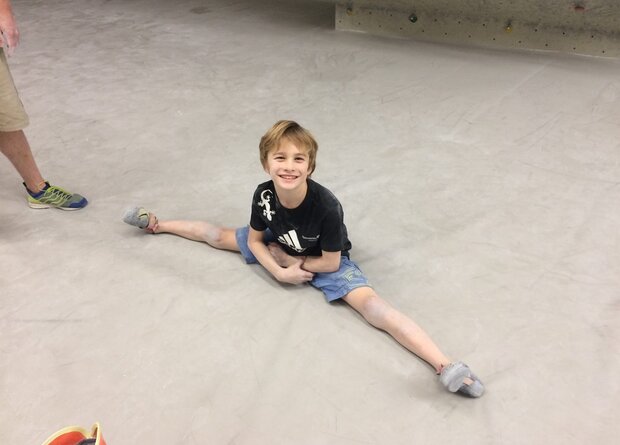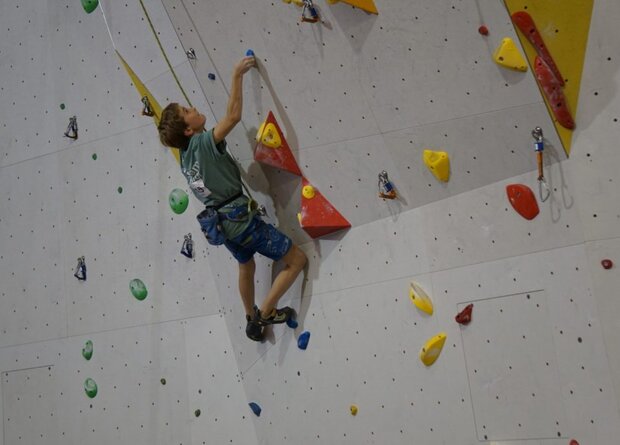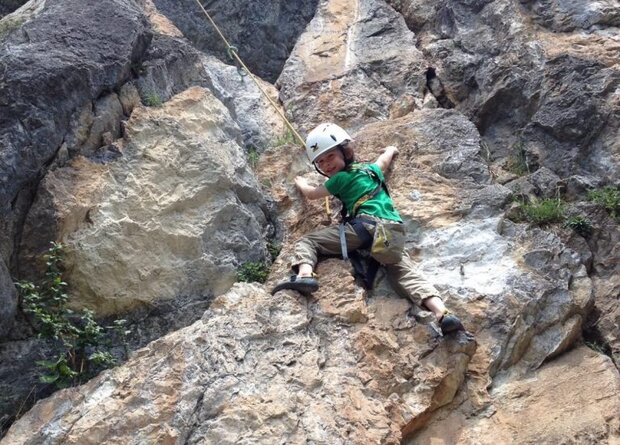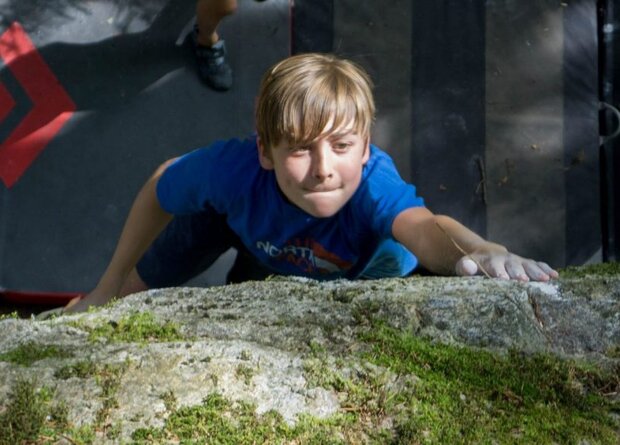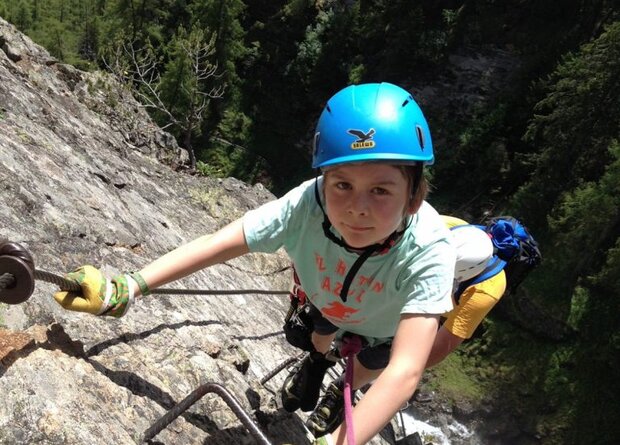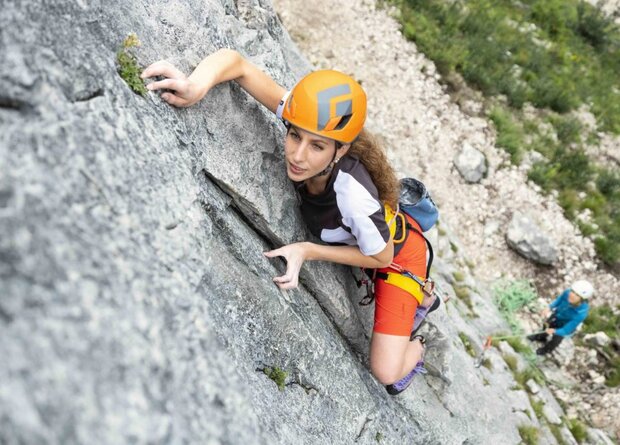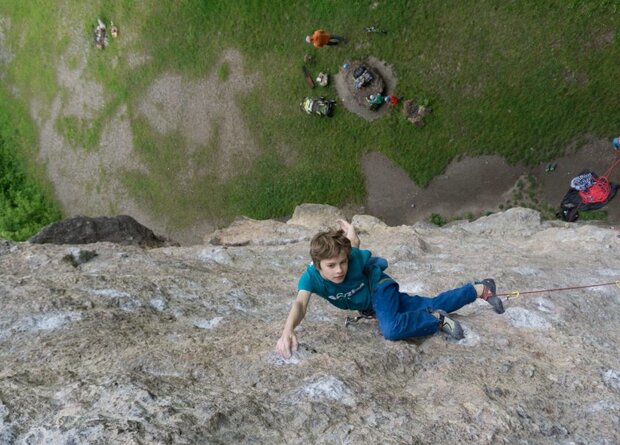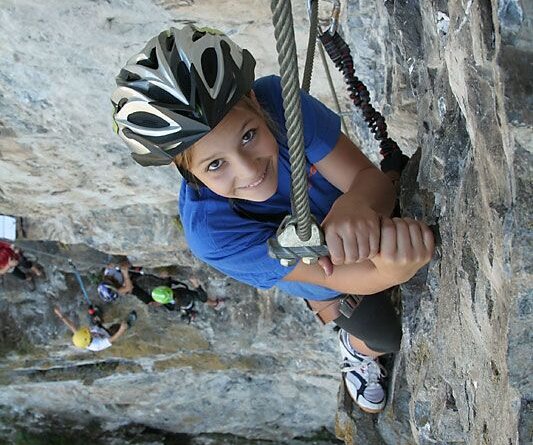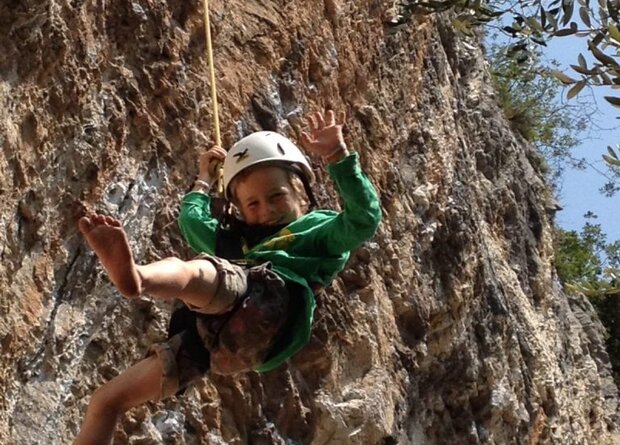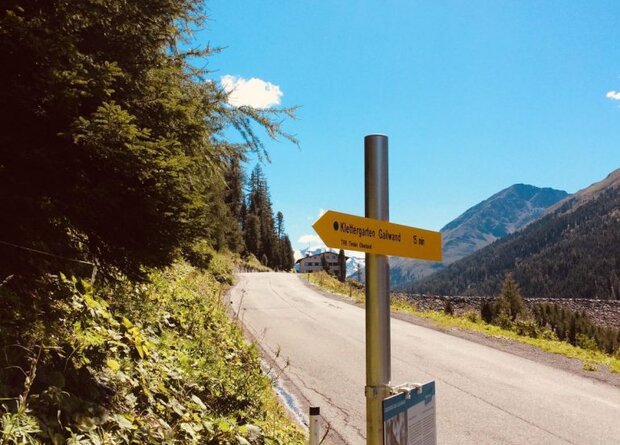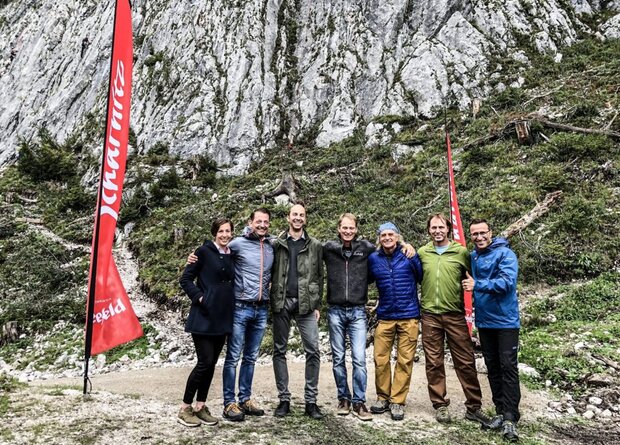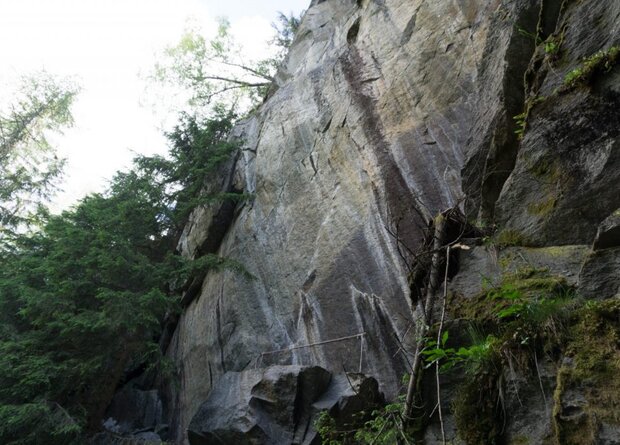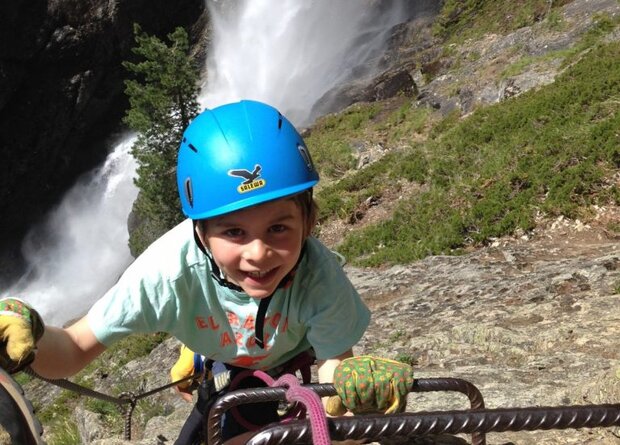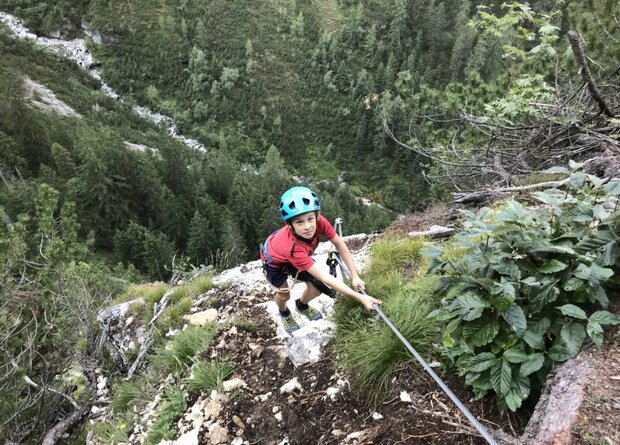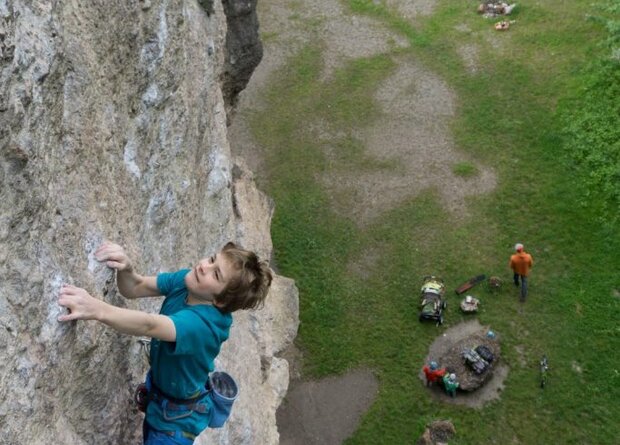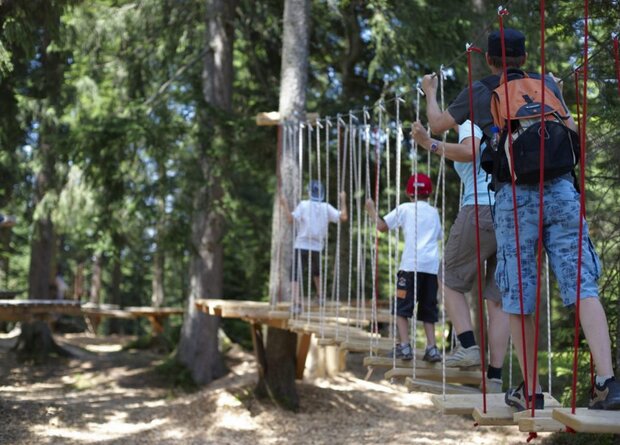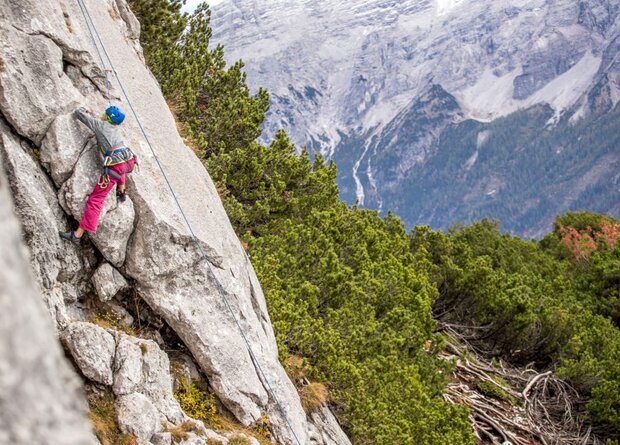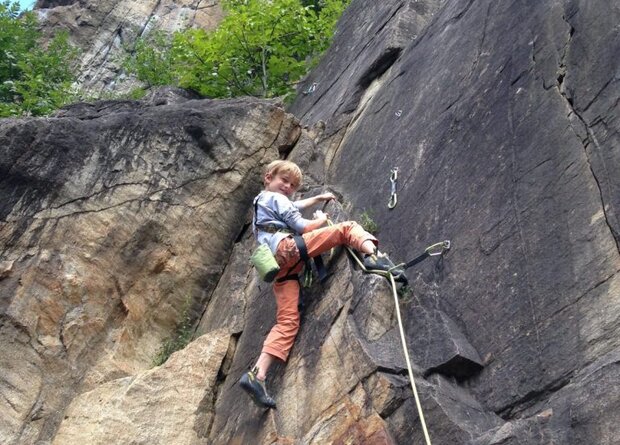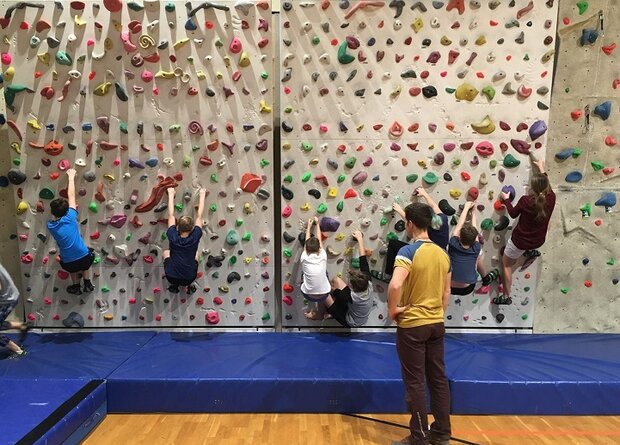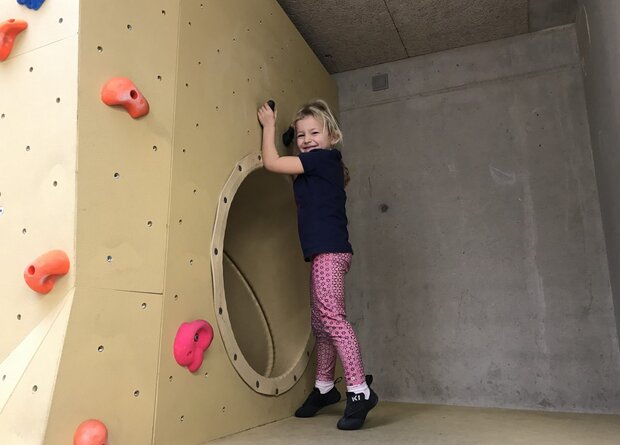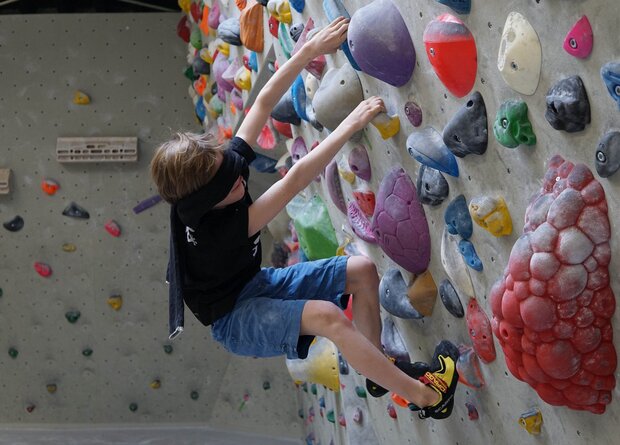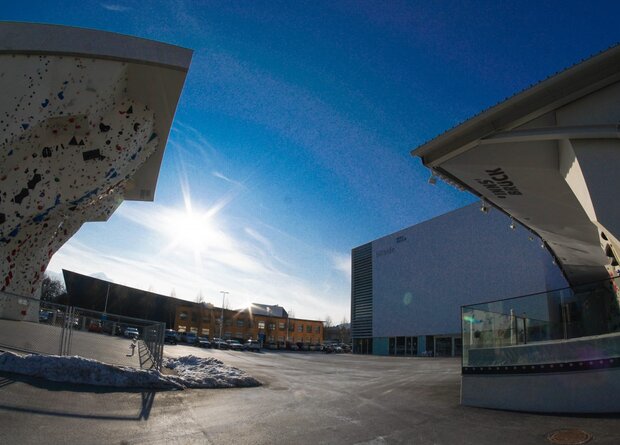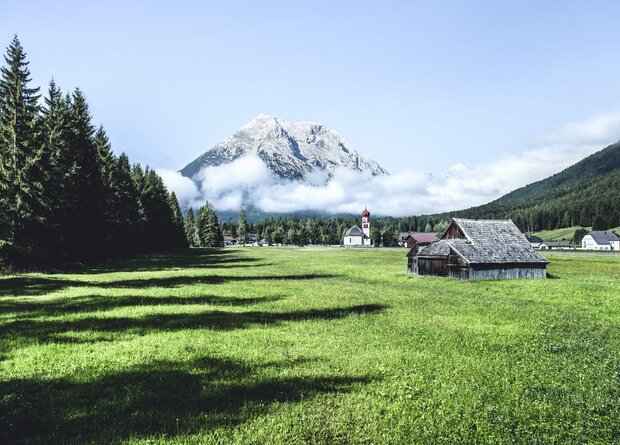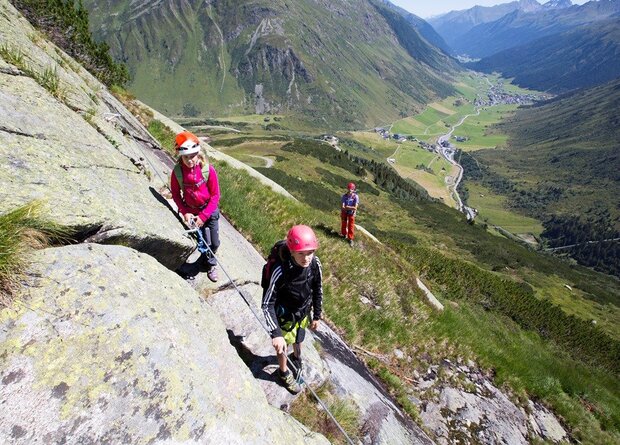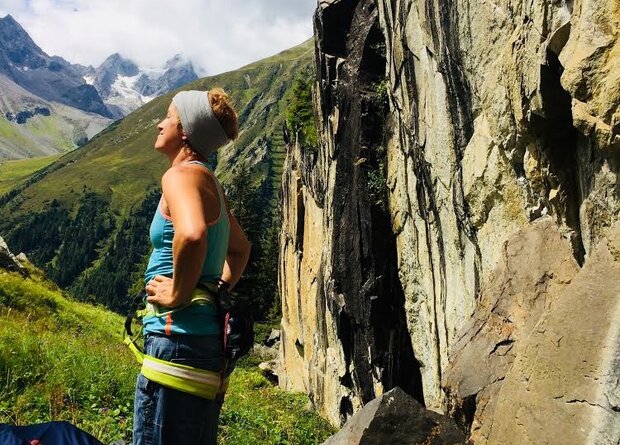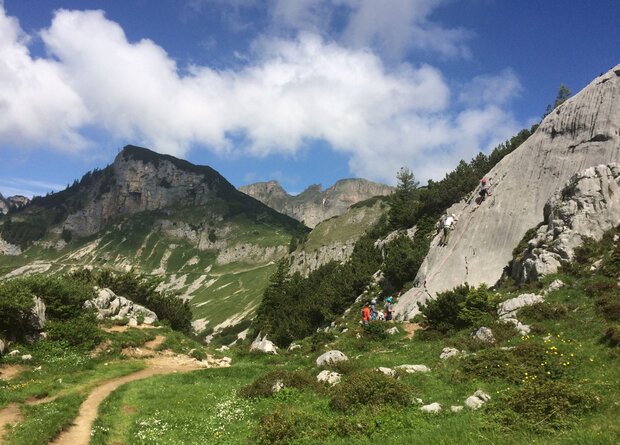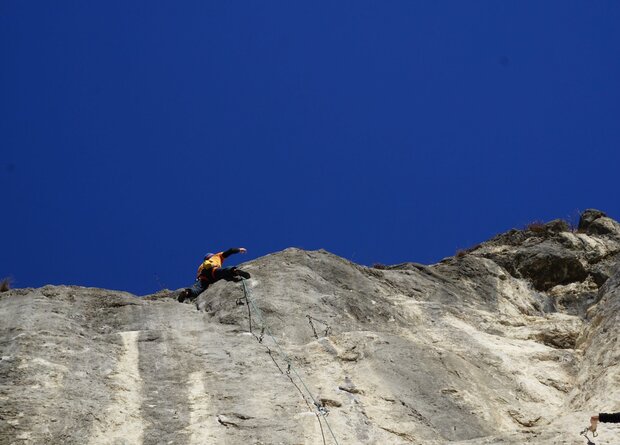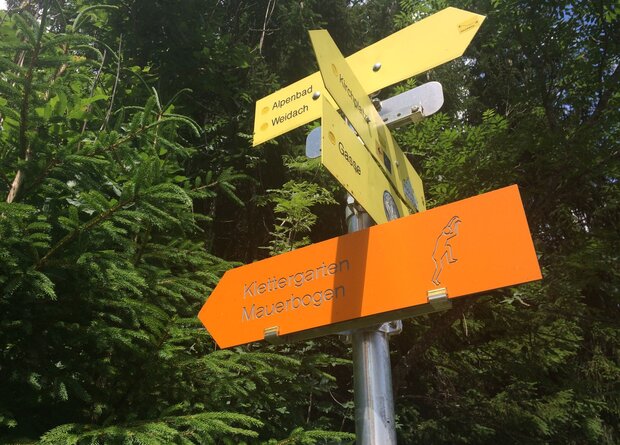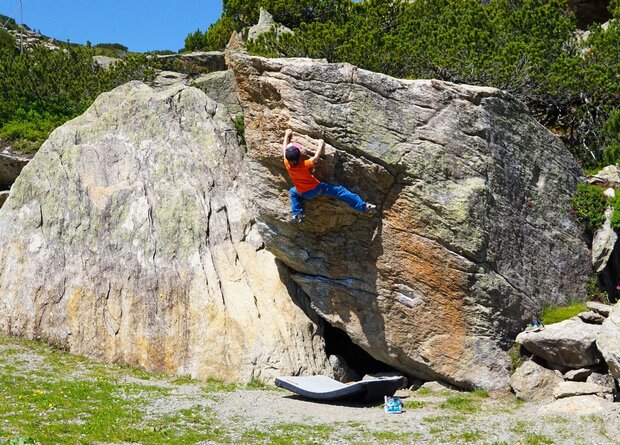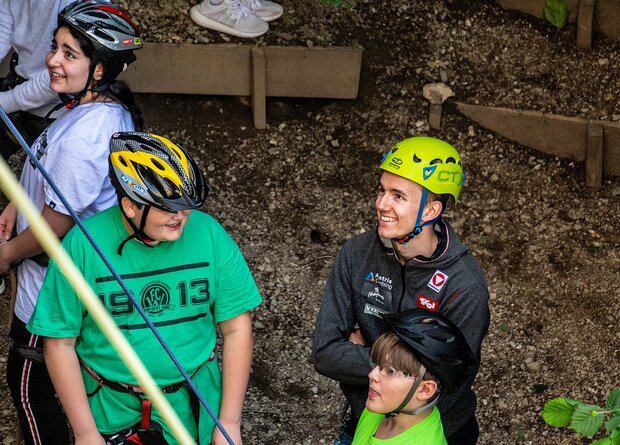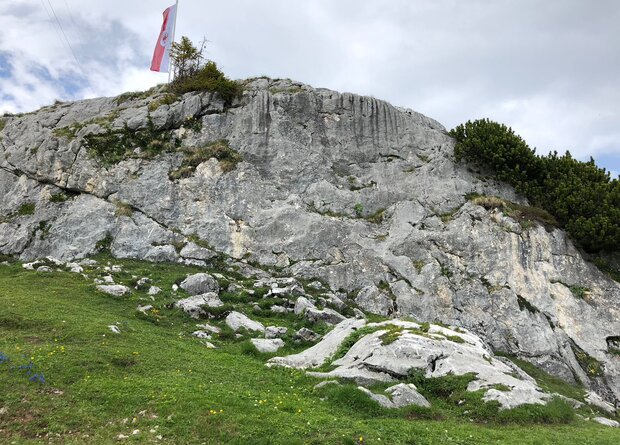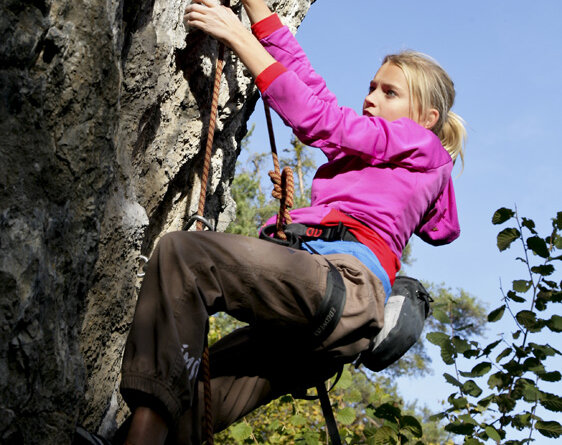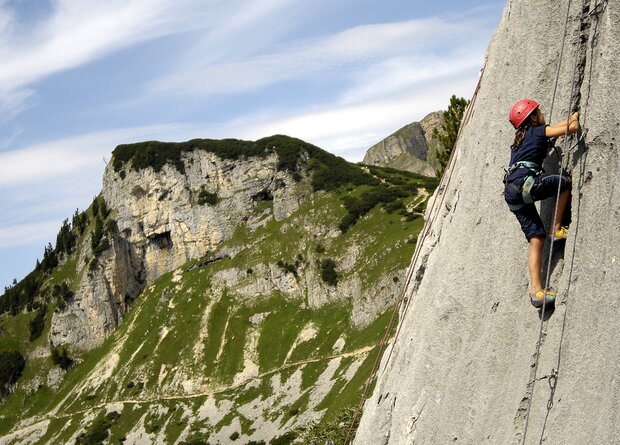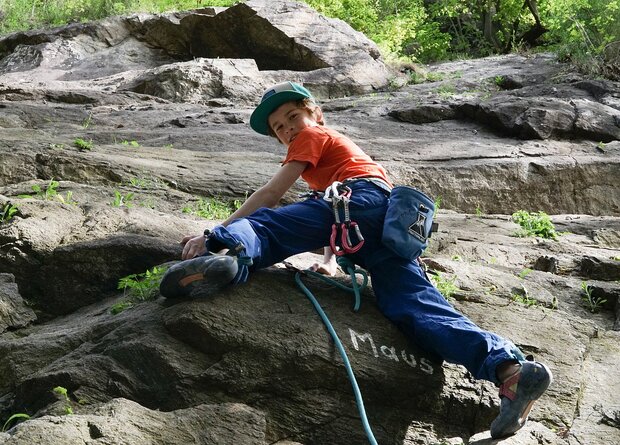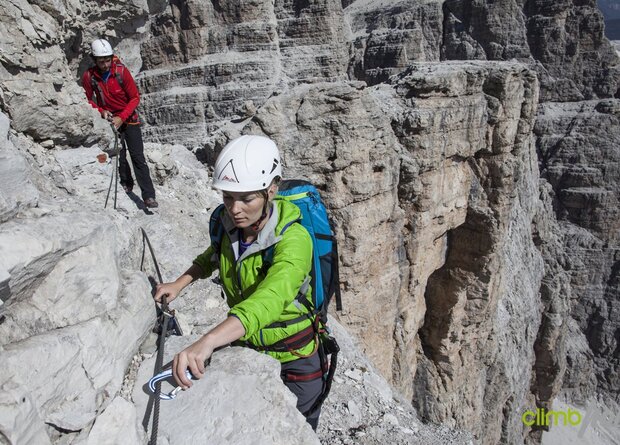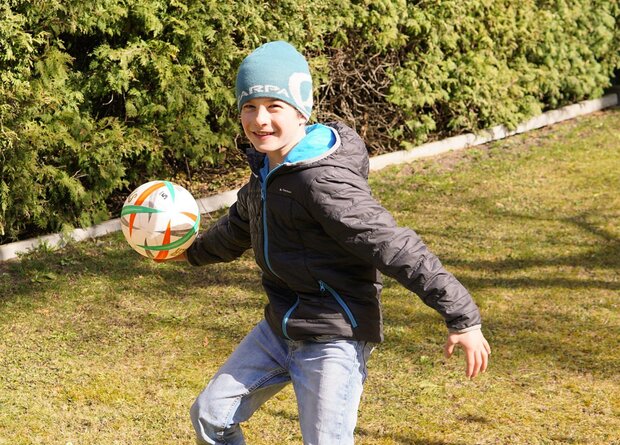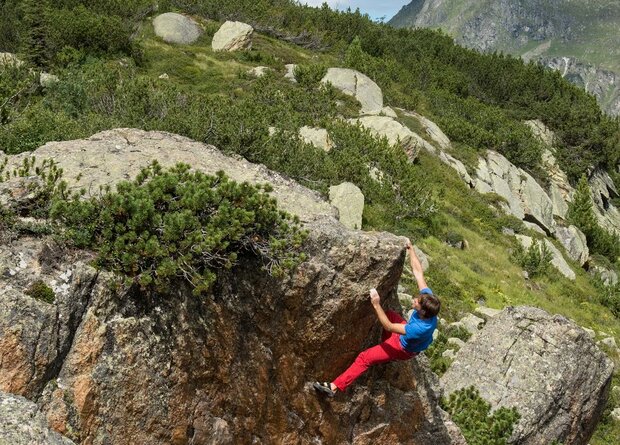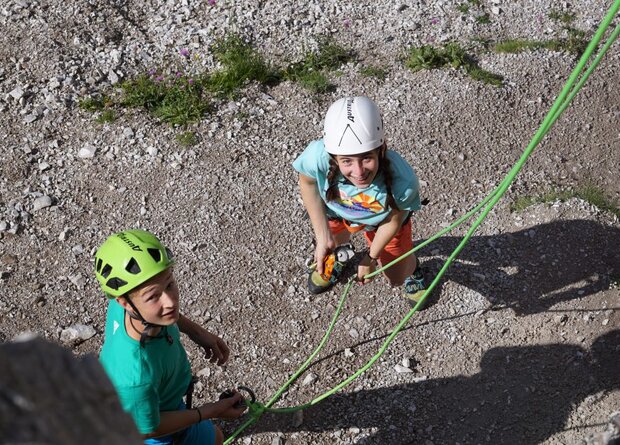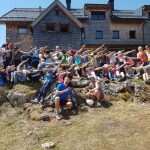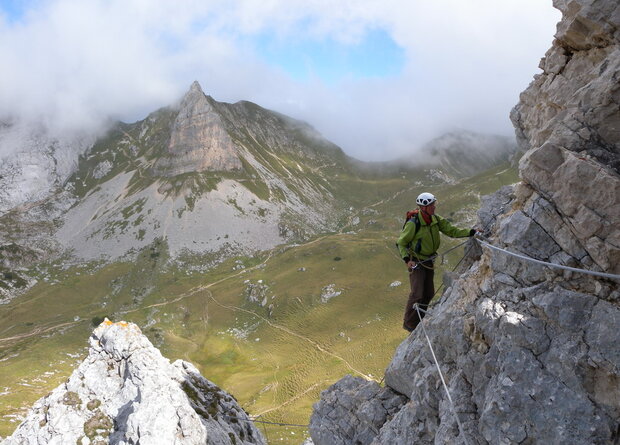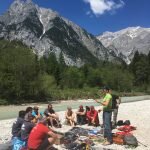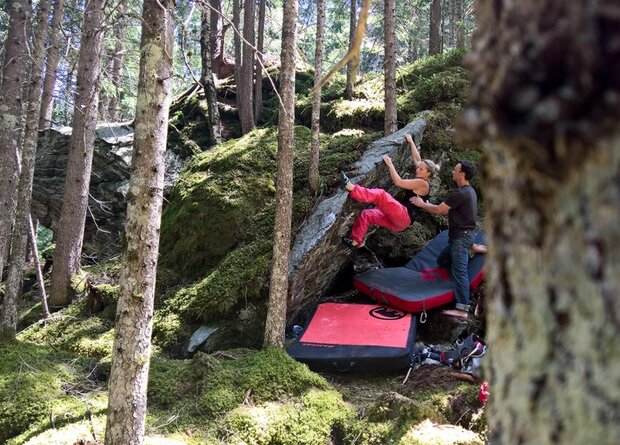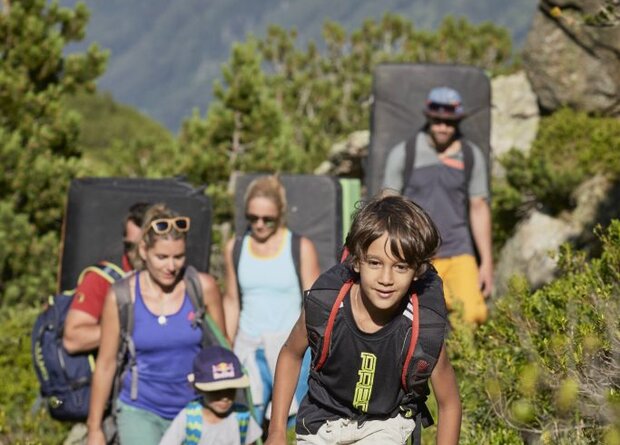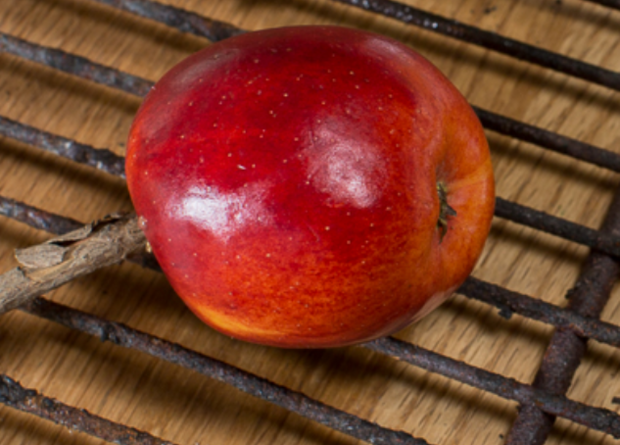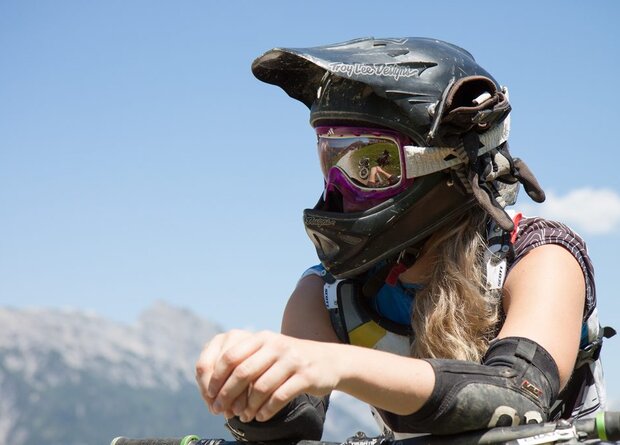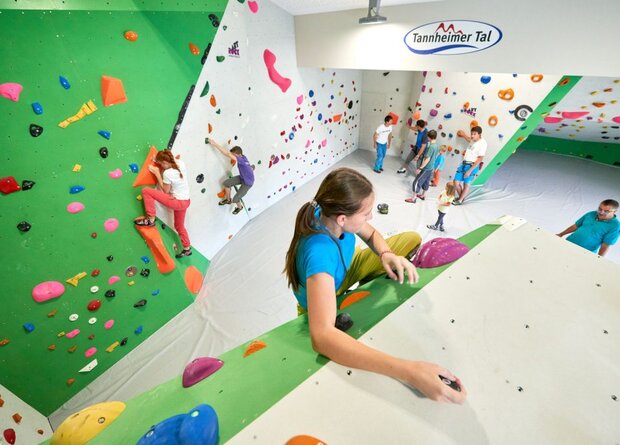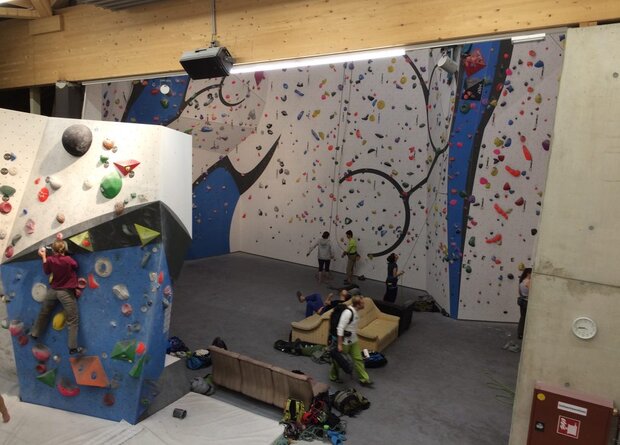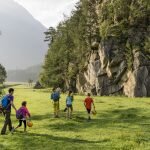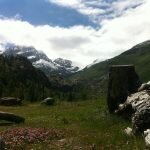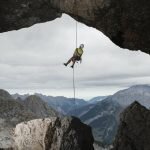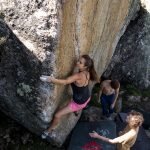The Wilder Kaiser region has been a climbing hotspot in Europe for over 200 years. Where in earlier times Dülfer and colleagues completed bold first ascents through the mighty Kaiser walls, today climbers revel in a potpourri of sport, plaisir and alpine climbing at its finest.
Climbing on the Karlsspitze at the Wirtskante near the Wilder Kaiser, photo: Roland Schonner, TVB Wilder Kaiser
Striking crags, pinnacles and pinnacles - lined up like half a crown, the Kaiser Mountains present themselves to their astonished onlookers. Proud and mighty - a mountain range as if painted. It is therefore not surprising that climbing pioneers such as Hans Dülfer and Mathias Rebitsch made a veritable pilgrimage to the Kaiser - and tested the mighty rock faces for their climbing ability as if under the spell of its majesty.
They are responsible for numerous first ascents. Dülfer, who studied in Munich, probably saw more of the Kaiser's rock faces than the lecture hall from the inside. Among other things, he achieved the first ascents of Totenkirchl-Westwand and Fleischbank-Ostwand. Mathias (Hias) Rebitsch set a big exclamation mark with the Rebitsch crack on the Fleischbank pillar. For a long time, his route was considered the most difficult crack tour in the Kaiser and to this day defends its reputation as a serious climb. The boldness of the mountain pioneers, who did not yet have modern equipment, makes many modern-day alpine climbers take their hats off in awe.
New climbing era - the emperor in a new guise
Stefan Glowacz founded the era of plaisir routes in the Kaiser in the 1990s and made a statement with "The Emperor's New Clothes" (8b+). In addition to the alpine climbing treasures, a top-class sport climbing garden was established at the Schleierwasserfall!
Climbing at the Schleierwasserfall, photo: Daniel Reiter, Peter von Felbert, TVB Wilder Kaiser
Some of Europe's most difficult routes can be climbed on the mighty rock ledge with its impressive waterfall that falls gently into the depths. Climbing pros and celebrities come here to rave about the fantastic atmosphere and impressive climbing.
Imperial climbing for everyone
Climbing in the Wilder Kaiser region
Pleasure climbers can choose from a huge number of moderate plaisir routes and alpine sport climbing routes in the Wilder Kaiser region, which lead through the legendary walls of Totenkirchl, Fleischbank, Predigtstuhl and many other cones, needles and pillars. Climbers Paradise presents 6 exemplary multi-pitch areas - which, however, only represents the tip of the Kaiserkrone. More routes and the alpine classics can be found in the climbing guide "Alpin Wilder Kaiser" by Marcus Stadler (second edition Panico-Alpinverlag 2017).
The Wilderer Kanzel
If you are into single-pitch climbing, you will find fantastic sport climbs of all difficulties in the Achleiten climbing garden or "Wilderer Kanzel", for example. Families with little climbers and climbing beginners can choose from 16 routes in the Kaiserklettergarten on Gams and Murmeltierfelsen, where the focus is on fun and which are also ideal for first attempts at lead climbing thanks to perfect protection.
The marmot rock in the Kaiserklettergarten in the Wilder Kaiser region
Energy stores can be replenished with all kinds of delicacies in the "Grutten-, Gaudeamushütte and Wochenbrunner Alm" hut-Bermuda triangle. And if you want a day off from climbing, His Majesty the Emperor invites you to go hiking, swimming, golfing, mountain biking ...
Everything - except climbing
Hiking, hiking, hiking: The Wilder Kaiser region offers some of the most beautiful hikes, mountain tours, circular tours, one-day and multi-day tours. From the "Kleines Törl" via Ellmauer Tor to Kaiserkrone. Water rats can enjoy award-winning swimming in the Going bathing lake: The lake was crowned the "most beautiful natural bathing lake in Tyrol". Alternatively, the Hintersteiner See lake with its deep green water invites you to enjoy a swim.
A snack after hiking, photo: Daniel Reiter, Peter von Felbert, TVB Wilder Kaiser
Vacations with the mountain doctor
Fans of the TV series of the same name can (secretly or obviously) follow in the footsteps of the film doctor Hans Siegl and take a close look at the "Gruberhof", for example.
Children's paradise: Hexenwasser and Ellmi's magic world
Kids experience an eventful day outdoors at Hexenwasser, without any strenuous hiking. From barefoot trails to bread baking, everything is on offer - and parents can relax on the wooden loungers on the large alpine plateau. Ellmi the magic frog welcomes his little guests with all kinds of fairies and gnomes to his magical world for a very special adventure trip.
There are also climbing routes for children in the Wilder Kaiser region, photo: TVB Wilder Kaiser
Mountains in flames - summer midsummer bonfire
On the weekend around 21 June, the Wilder Kaiser region, like the rest of Tyrol, celebrates midsummer. Fires are lit on every summit, in every cirque on every hill from dusk onwards. The best way to enjoy this magical spectacle is from the opposite side of the mountain to the Kaiser. On Solstice Saturday, all the mountain railroads are open especially for this event. Guests with a day ticket can float up for free and watch the fires on the Kaiser while enjoying a delicious dinner in the mountain restaurant.
Just ask: Marcus Sappl, Tourism Manager Scheffau and enthusiastic Kaiser climber: What makes climbing in the Wilder Kaiser unique for you?
The location, easily accessible by car, train or, as in the past, by bike. Depending on the weather, you can choose north or south faces. There is climbing food for every taste, whether 3 or 4 routes or for the hard mover in the 10th degree. Protection from plaisir to almost completely without pitons.
Why should every climber have climbed in the Wilder Kaiser at least once?
The hard and structured Wetterstein limestone of the Kaiser Mountains gives you as a climber an incredible experience if you get involved in a game with its special features. It is not for nothing that climbing history has been written here in the Kaiser time and again, with the best climbers of every era leaving their mark on the Koasa. Not to forget that in 1977, the Pumprissen was the first ascent of a 7th degree tour, thus opening up the UIAA scale. That's why every alpine climber should have a classic or a plaisir tour of the Wilder Kaiser in their tour book.
What does a perfect Kaiser climbing day look like for you?
Being out and about with a good friend on almost perfect rock and with protection that is easy on the nerves. Sitting in a mountain hut afterwards, enjoying a beer at the end of the tour and, as is customary among climbers, philosophizing with like-minded people about the metres of climbing you've just done.
Briefly noted
Accommodation in the Wilder Kaiser region Landhotel Föhrenhof
The Landhotel Föhrenhof is located just outside Going, surrounded by alpine meadows and a perfect view of the Kaiser. The pine-scented rooms with their wide windows offer wonderful panoramic mountain views. The sumptuous breakfast buffet offers everything climbers need for a long day in the mountains: Protein, muesli, fruit, wholemeal bread and much more. Those who opt for half board can indulge in a 4-course menu in the evening - always freshly prepared, always regional. The chef and second-generation hotel owner attaches great importance to this.
Gaudeamushütte
The Gaudeamushütte is the Alpine Club hut of the Main-Spessart section. It won the title of "Austria's most popular hut" in 2017. Homemade cakes on the sun terrace with a view of the valley quickly make you forget the exertions of hiking and climbing.
Gruttenhütte
The Gruttenhütte is the Alpine Club hut of the Munich section of the Turner Alpenkränzchen. It stands like an eagle's nest on a plateau above the western slopes of the Gruttenkopf.
The Gruttenhuette in the Wilder Kaiser region
Wochenbrunner Alm
Starting point for hikers, climbers and via ferrata climbers. The large terrace with adjoining wildlife park invites you to enjoy a relaxing end to a magnificent day. No overnight stay possible.
All accommodation as well as many other tour tips and weekly programs can be found at: www.wilderkaiser.info
How to get there
You can take the train to Kufstein, Wörgl or St. Johann in Tirol. From here you can continue by bus. If you wish, you can apply for your bus ticket online. This will be sent to them online up to 72 hours before arrival.
The KaiserJet connects the villages and cable car valley stations with each other. The KaiserJet can be used free of charge with a guest card.
A minibus runs twice a day in summer to the Wochenbrunner Alm starting point. If you want to leave earlier than 9 am or be more flexible, you have to drive to the Wochenbrunner Alm yourself. The toll costs 4 euros, of which 1.50 euros are credited back when you stop off at the Wochenbrunner Alm.
By car from Germany via the A8 (Munich towards Rosenheim) and continue on the A93 towards Innsbruck/Brenner. Take the Kufstein Süd exit.
Or via the A12 coming from Innsbruck/Bregenz.
Total areas
5 sport climbing gardens, 6 multi-pitch areas (which are included in Climbers Paradise, there are numerous other routes), 1 family climbing garden,
4 via ferratas, 3 climbing gyms
Best time of year
Depending on snow conditions and plans between April/May/June and October/November
Family friendliness
The Wilder Kaiser region is all about kids - with Ellmi's Zauberwelt and Hexenwasser, for example, families have great mountain adventure worlds. There are also child-friendly climbing gardens and an extensive supporting program for families. Further information about the region can be found at: www.wilderkaiser.info
Climbing history - how it all began Dülfer, Rebitsch & Co - the emperor invites you to an audience on the rock
As early as the 19th century, the Wilder Kaiser region experienced its first climbing heyday, including tourist development: alpinism and tourism go together in the "Kaiser" like Dülfer and the Fleischbank east face. Born in Wuppertal, he came to Munich in 1911 to study - the proximity to the Alps was too tempting. And so Dülfer was to be found more on the rock faces than in the lecture hall. He is credited with 50 first ascents in 4 years - many of them in the Kaiser Mountains. The train connection to Kufstein was perfect and was used by climbers and recreationists alike at the beginning of the 20th century. Dülfer would certainly have bought a vacation ticket in this day and age, with so many "imperial audiences". And so it comes as no surprise that the Totenkirchl west face and the Fleischbank east face, for example, were first climbed by the climbing pioneer Dülfer. Mathias (Hias) Rebitsch was also an enterprising chemist who traveled from Innsbruck to the mountains by bike and train. It can be assumed that he passed by the chemistry laboratory. However, all of his research took place in the mountains. Rebitsch was passionate about exploring the climbability of rock faces. One of his masterpieces is the "Rebitsch crack" on the Fleischbank pillar. For a long time, this alpine tour was one of the most difficult routes in the Kaiser and is still described today as "serious crack climbing".
New climbing era - new imperial garb: "The emperor's new clothes"
The Karlsspitze along the Wirtskante, photo: Roland Schonner, TVB Wilder Kaiser
In addition to the alpine classics, which demanded and still demand a great deal of boldness, daring and nerve due to their sometimes very sparse protection, a new generation of climbers also established themselves in the Kaiser, opening up alpine sport climbing routes at the highest levels of difficulty. The wave of plaisir routes in the Kaiser began with exceptional climber Stefan Glowacz. With his route "The Emperor's New Clothes", he made a remarkable plaisir statement on the Fleischbank pillar. To this day, "Koasakraxla" who know their way around find new lines that invite you to climb.
